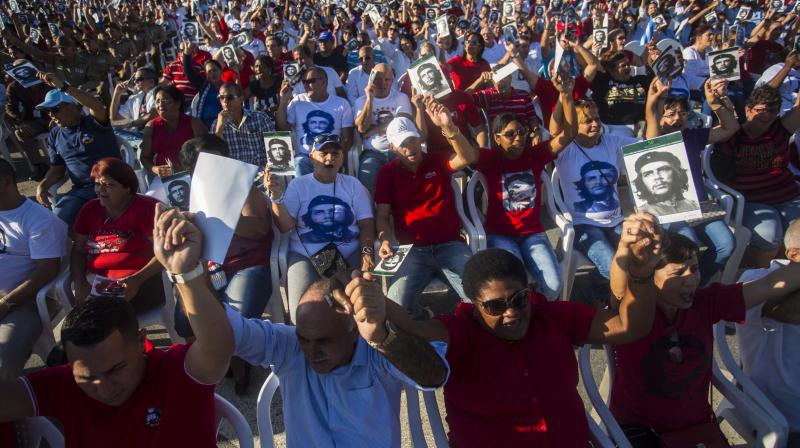Salute Che! 50 years on, the legend still endures

HE may well go down in history as the greatest continental figure since [Simon] Bolivar,” The Guardian’s Richard Gott presciently declared 50 years ago in reporting the demise of Ernesto Che Guevara in the jungles of Bolivia. “Legends will be created around his name.” Half a century later, Che — as Guevara was affectionately, and indelibly, dubbed by his Cuban comrades because of his propensity for using the Argentinian term for ‘friend’ — keeps turning up in the unlikeliest of places.
The official commemorations in recent days in the Cuban city of Santa Clara and Vallegrande in Bolivia come as no surprise. The old man presiding over the ceremony in Santa Clara, meanwhile, was one of Che’s closest comrades-in-arms in the Sierra Maestra. Back then, Che and Raul Castro were in ideological terms more closely aligned with each other than with Fidel Castro. If Santa Clara, where Che’s bones were finally interred after they were dug up some 30 years after his demise, was the scene of his finest hour as a guerrilla commander, Vallegrande witnessed what could be deemed his ultimate defeat. It’s the town where Che’s corpse was conveyed on October 9, 1967 after the Bolivian authorities, under direct CIA guidance, decided that a deceased Guevara would be a safer bet than placing him in the dock in a trial that would grab international attention. Little did they know.
Vallegrande was where Gott saw his body 50 years ago, shortly after he heard a CIA agent in military garb boast, “We’ve got him, we’ve got him!” A couple of days later, on his flight out of La Paz, the correspondent encountered another American, Richard ‘Pappy’ Shelton, the Green Beret major in charge of training counter-insurrection Boli-vian troops. “Mission accomplished,” the latter calmly declared.
Both these phrases have been recycled, in different contexts, by recent presidents of the United States, a nation that in many ways continues to qualify for the accolade bestowed on it by Che — the greatest enemy of mankind.
Vallegrande now hosts a cultural centre named after Guevara. Evo Morales, elected the first indigenous president of Bolivia 11 years ago, has never disguised his admiration for Che — he named his youngest child Ernesto Fidel.
Even before his advent as a credible socialist leader, though, La Higuera, the village not very far from Vallegrande where Che was brought as a prisoner and then summarily executed, had become something of a shrine to the fallen guerrilla, who acquired the nomenclature of San Ernesto de la Higuera. The schoolhouse where he was slain — by a junior officer whose eyesight was, many years later, restored by Cuban doctors — became a shrine, not least for the region’s peasants, who recognised too late what the attempted insurrection was all about.
This month’s commemorations have not been restricted to Cuba and Bolivia. One can only wonder, for example, what thought prompted the postal authorities in the Republic of Ireland to issue a postage stamp bearing Che’s familiar visage — based on Albert Korda’s famous photograph, the handsome face captured therein conveying a combination of indignation, righteous wrath and determination.
By arrangement with Dawn

